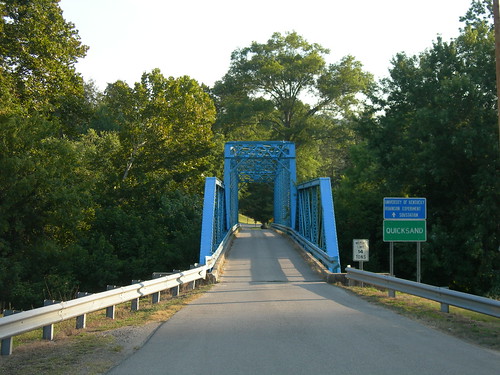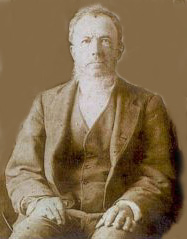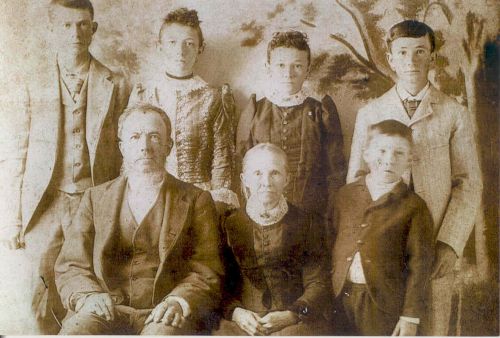Forgive my recent lack of updates. School is back in session, and I found that once again, my genealogical interests had to take a back burner to career and family. Ever since I began teaching, I have found my summers to be a mad pursuit of my family tree, while the rest of the year keeps me too busy to do much research. I never totally stop or drop it altogether, but I just can’t devote as much time to it as I do during the summer. It was, for example, the summer after my first or second year teaching that I discovered I had some Scottish ancestry and devoted a lot of time and energy into uncovering different Scottish clans and celebrated all those famous ancestors I found in my tree.
I was spurred into new explorations by a comment I received from Glenn Hill on Penelope Who? — a post in which I explored the three most popular theories as to the family of origin of the wife of Captain Christopher Clark. For what it’s worth, I’m not sure I make this clear in the post I wrote, but I lean toward “Johnson” as her surname, though I admit to a curiosity about the large number of males with the given name “Bolling” in the family.
Glenn’s comment was really more of a question: had I any knowledge of Jewish connections in the family? He had heard Isabella Hart and Mark Anthony (my 8th great-grandparents, and his ancestors, too) were both Jewish. I had actually never heard this before, and I was intrigued. I teach at a Jewish high school and have a great deal of interest in Judaism as a result.
My first thought, of course, was skepticism, as I had not heard of a Jewish connection before, but I have also learned enough about genealogy to know that stories come from somewhere, and I check out new leads in the interest of being thorough. My first thought was to try Google. I did indeed find a reference (scroll down to Thomas Cooper) to Isabella Hart hailing from a Jewish trading family. The same website indicated that Mark Anthony was a Marrano. However, the website drew other conclusions about which I was skeptical — namely that Penelope was a “Bolling,” which seemed to me to be the least likely conclusion based on evidence available, excepting the preponderance of males named “Bolling” in the family in succeeding generations. Therefore, my second thought was to run it by a genealogist whom I trusted: Linda Sparks Starr. Linda is the webmaster of Colonial Virginia Connections, a site dedicated to researching the Clark/Moorman lines and allied families (including Anthony). I have learned to trust the conclusions of many contributors to her site, as they are usually more dedicated to finding evidence for conclusions than to fleshing out their family trees. Linda directed me to Arlene Anthony’s articles on her site.
Before I delve into Arlene’s conclusions, I want to back up and recount the “traditional” narrative regarding Mark Anthony’s background. There are several versions of this story that vary in the details, but this version is the one passed down into the Georgia line of the Anthony family. Marcus Antony was purportedly a merchant in Genoa, Italy. He moved to Holland in the 1600’s. When his son, later known as Mark Anthony, was old enough to leave home, it was Marcus Antony’s desire that he be educated in Italy. Apparently, Mark Anthony had other ideas and decided to run away to sea. His ship was waylaid by Barbary pirates, who kidnapped Mark Anthony and sold him into slavery in Algiers.
Mark Anthony was made to cut wood in a forest — and though I’ve never seen Algiers, I was rather under the impression it was skimpy on “forest” land. My conclusion is that either this bit of the story never happened or else it didn’t happen in Algiers. At any rate, Mark Anthony and his traveling companion, who had also been kidnapped, grabbed their moment and bashed in the head of either their guard or their master, depending on the version of the story, and escaped in a conveniently hidden boat. A British ship bound for Virginia found the two companions in their little boat and rescued them, selling them as indentured servants to pay for their voyage to America.
Nancy Vashti Anthony Jacob recounts a version of this story in her book Anthony Roots and Branches. I don’t have a copy of this book and haven’t been able to find one, but I am ever on the look out — I do know a couple of libraries within a two-hour drive from me have the book, but here we run into the fact that I have almost no time to do this sort of scouting around.
This story makes for a rollicking good read, but one must admit it sounds fanciful in the extreme. Arlene Anthony mentions in her narrative on Linda’s site that she, too had heard this tale and doubted its veracity. Arlene does not believe the family is of Italian origin, but hails from the Exeter or London Anthony clans.
I must admit to being more confused after reading Arlene’s narrative than I was before I started, and perhaps one day I’ll make a project of trying to figure it all out, but for right now, the most important information, at least to Mark Anthony descendants, is Arlene’s conclusion that the family “lived in the Low Countries (Holland, Belgium, Germany) from at least 1450 on, with several [branches of the family] emigrating to England.” Furthermore, Arlene believes that
[T]hey were probably from the Iberian countries prior to this, some possibly from Italy. They came to England for several reasons: religious … seeking freedom as evidenced in some very early wills … business … (they were part of a contract labor package negotiated by the Crown and a German company, formed to run the Royal Mint when it was consolidated into the Tower — I spent an afternoon with the Head Archivist and Librarian at the Tower of London, who was a wealth of information) and as businessmen, expanding their markets to England. The Anthony family became important about 1525 to the Royal family in several areas.
Arlene later discusses several individuals in the Anthony family who were involved in goldsmithery, quack medicine, and possibly alchemy. In an examination of the London Anthonys, Arlene found a Derrick Anthony, who was born in 1522 and apprenticed to a goldsmith at the age of 13. He travelled to Portugal, then the center of gold artisans, to learn filigree. He returned to England and was made Chief Engraver to the mint. His denization papers describe him as “dark, dirty, and Egyptian.” Arlene made enquiries, and according her findings, “the best authorities I can find tell me that this means he is either of Romany or Sephardic Jewish background.” By the way, the Roma people were commonly referred to as “gypsies,” and Sephardic Jews mostly came from the Iberian peninsula — many of them became Marranos during the Spanish Inquisition. This, then, may be the origin of Glenn’s information that Mark Anthony was a Marrano. As Arlene explains, many Marranos came to the Low Countries during the Spanish Inquisition (which fits with her dates), then later to England when Spain conquered the Lowlands.
The Exeter Anthony line begins with John Anthony, a wealthy merchant who owned the Red Lion, a galleon, among other ships. He was apparently a supporter of Oliver Cromwell. The bit I found most intriguing is that John Anthony’s son Edward, a famous goldsmith, apparently had a son named Mark, an apprenticed haberdasher, who went to Holland with his master, John Parker’s son, also named Mark (Parker). The goldsmithing connection is interesting. I have not read over Arlene’s notes to see if she made a definite connection between the Exeter Anthonys and the London Anthonys.
As I noted, however, Arlene has not pinpointed a definite connection from Mark Anthony to either the Exeter or London Anthonys, but does speculate that either family is most likely his family of origin. However, in reading of the London Anthonys, I was struck by Arlene’s description of several Anthony lines, all connected, involved in privateering. Also, Arlene found a book in her travels to London entitled Ebenezer, or the Tender Mercies of God, by William Oakley. In it, Oakley recounts being kidnapped off the coast of Land’s End, Cornwall by Corsairs and enslaved in Algeria. While in Algiers, Oakley met a man named John Anthony who was also enslaved. Along with several other men, William Oakley and John Anthony built a boat and managed to make it to Majorca. Sound familiar? This, of course, may be the origin of the pirate stories in Mark Anthony’s background. I should note that Mark’s sons (I am not sure if this is documented or not) were John and Joseph.
Arlene clearly believed that Mark “made up” the story about being kidnapped by pirates, but as you can see, it appears to have originated somewhere. In Arlene’s words, “But why all the fancy stories? Hiding something??? I don’t know, but I certainly want to know.”
Me too, Arlene.
I think it is certainly logical to assume that if Mark Anthony was a Marrano, he would hide his background, perhaps making up elaborate stories or even placing himself in events that happened to relatives, distant or close. As to his wife, Isabella Hart, aside from the fact that Hart is, indeed, the surname of some Jewish families and that Isabella’s mother was named Susannah Rush, also a Jewish given name and sometimes surname, it is not entirely improbable. Glenn is checking on her origins and has stated he will let me know his findings.
For now this will have to remain an intriguing research question — do I (and Glenn, and myriad other folks who descend from this line) have Jewish ancestry as recently as the 18th century?
I descend from Mark Anthony and Isabella Hart through two lines (my 4th great-grandparents were second cousins):
Dana Michelle Swier
+ Patti Jo Cunningham
++ Udell Oliver Cunningham
+++ Herman Cunningham
++++ Amos Blakey Cunningham
+++++ Mary Ann Penelope Anthony
As Mary Ann Penelope Anthony’s parents were second cousins, I will trace first her father, then her mother to Mark Anthony and Isabella Hart:
++++++ Matthew Jouett Williams Anthony
+++++++ Micajah Anthony
++++++++ Joseph Anthony (Jr.)
+++++++++ Joseph Anthony
++++++++++ Mark Anthony and Isabella Hart
++++++ Ann Blakey Roberts
+++++++ Elizabeth Blakey
++++++++ Agnes Anthony
+++++++++ Joseph Anthony
++++++++++ Mark Anthony and Isabella Hart


 Johnson Franklin Cunningham was born in Oglethorpe County, Georgia1 on October 17, 1823 and died in Denton County, Texas on January 9, 18992. He lived with his family in Oglethorpe County, Georgia until 1880, when he moved his family to Texas.
Johnson Franklin Cunningham was born in Oglethorpe County, Georgia1 on October 17, 1823 and died in Denton County, Texas on January 9, 18992. He lived with his family in Oglethorpe County, Georgia until 1880, when he moved his family to Texas.